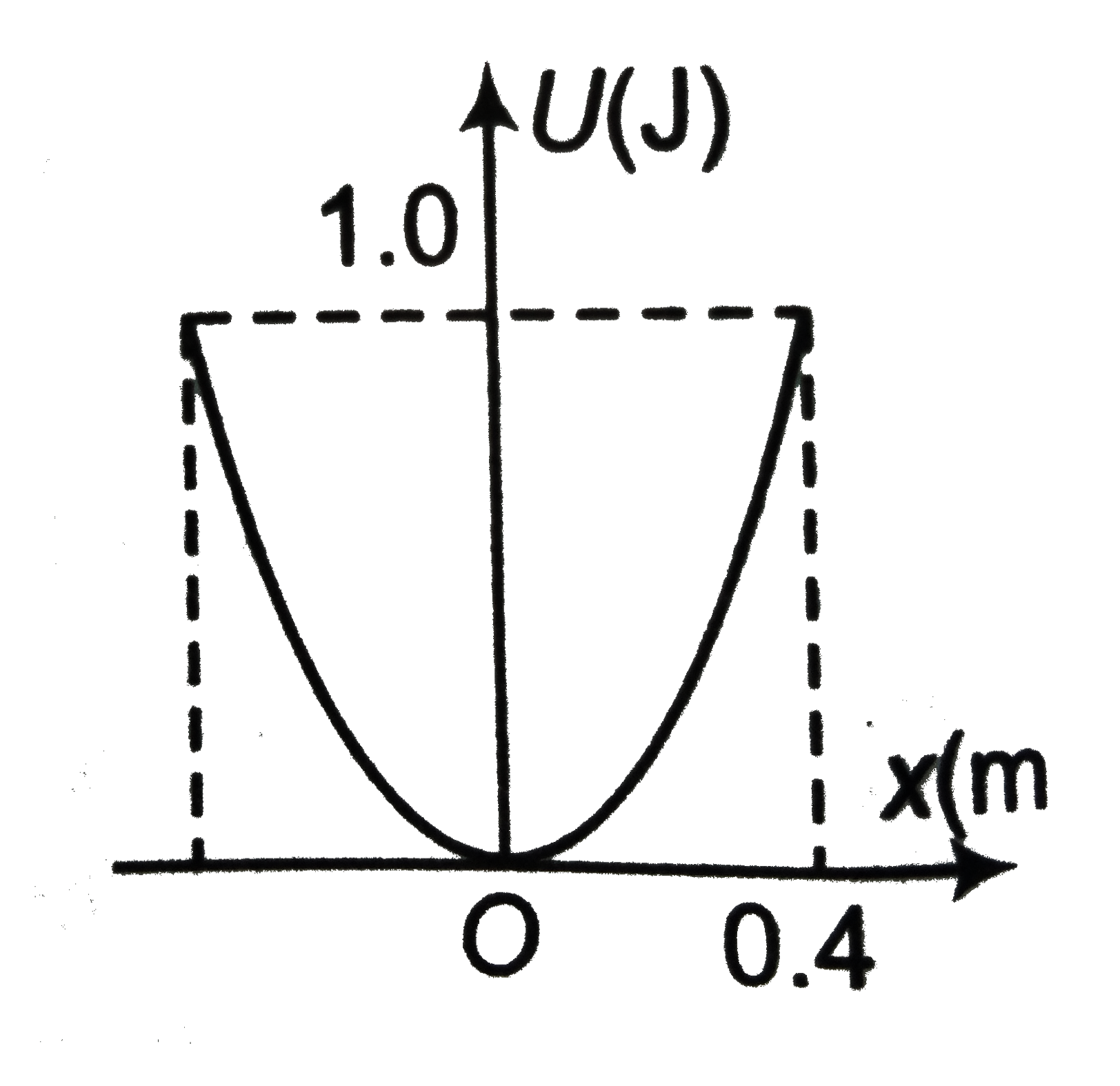A particle of mass 5 kg is placed in a field of gravitational potential
v=(7x2−21x)J/kg . Then its motion
is SHM with angular frequency 1.67rad/s
is SHM with angular frequency 3.74rad/s
Is oscillarotry but no SHM
is SHM with amplitude 5.5m
The correct Answer is:B
Potential energy, U=mV=5(7x2−21x)
=(35x2−105x)
F=dUdx=−(70x−105x)
=−70x+105 …(i)
As F∝x and this force F is directed towards mean position of particle, hence if the particle is left free, it will execute linear SHM.
∴ Spring factor, k=70N/m
Angular frequency,
ω=√km=√705=3.74rad/s
Without knowing the energy, we cannot find its amplitude.
Topper's Solved these Questions
- BOOK - PRADEEPCHAPTER - OSCILLATIONS AND WAVESEXERCISE - integer type question8videos
OSCILLATIONS AND WAVES
- BOOK - PRADEEPCHAPTER - OSCILLATIONS AND WAVESEXERCISE - Assertion-Reason Type Questions23videos
OSCILLATIONS AND WAVES
- BOOK - PRADEEPCHAPTER - OSCILLATIONS AND WAVESEXERCISE - Multiple Choice Question-II14videos
OSCILLATIONS AND WAVES
- BOOK - PRADEEPCHAPTER - MATHEMATICAL TOOLSEXERCISE - Fill in the blanks5videos
MATHEMATICAL TOOLS
- BOOK - PRADEEPCHAPTER - PHYSICAL WORLD AND MEASUREMENTEXERCISE - Competiton Focus Jee Medical Entrance18videos
PHYSICAL WORLD AND MEASUREMENT
Similar Questions
A particle of mass 1 kg is released from rest at a point where gravitational potential is 5 J/kg. After some time, it passes through a point B with a speed of 1 m/s. What is the gravitational potential at B ?
View SolutionThe gravitational field in a certain region is given as
→E=(3Nkg−1)ˆi+(5Nkg−1)ˆj
(a) What will be magnitude of gravitational force acting on a particle of mass 3 g which is placed at the origin ?
(b) What will be gravitational potential at point (12m, 0) and (0, 6m) considering that potential at origin is zero ?
(c ) A particle of mass 3 kg is moved from the origin to the point (9m, 4m). Calculate the change of gravitational potential energy.
(d) If the above particle is moved from (5m, 0) to (0, 5m), then find the change in potential energy.View Solution
Knowledge Check
- Question 1 - Select One
A particle of mass 4g is in a gravitational potential V=(800x2+150)erg/g. Its frequency of oscillation is
A5πHzB15πHzC50πHzD50πHz - Question 2 - Select One
A particle of mass 10gm is placed in a potential field given by V=(50x2+100)J/kg. The frequency of oscilltion in cyc≤/sec is
A10πB5πC100πD50π - Question 3 - Select One
A particle is placed in a field characterized by a value of gravitational potential given by V=−kxy, where k is a constant. If →Eg is the gravitational field then
A→Eg=k(xˆi+yˆj) and is conservative in natureB→Eg=k(yˆi+xˆj) and is conservative in natureC→Eg=k(xˆi+yˆj) and is non-conservative in natureD→Eg=k(yˆi+xˆj) and is non-conservative in nature
A heavy point of mass 15 kg is placed at the origin of coordinate axis. Find the gravitational potential at a point located at x=5cm on X-axis.
View SolutionAn α particle is placed in an electric field at a point having electric potential 5V. Find its potential energy ?
View SolutionA particle of mass 5kg moving in the X−Y plane has its potential energy given by U=(−7x+24y)J. The particle is initially at origin and has a velocity →U=(14.4+4.2J)m/s
View SolutionTwo bodies of masses m and M are placed at distance d apart. The gravitational potential (V) at the position where the gravitational field due to them is zero V is
View SolutionA particle of mass 2kg moves in simple harmonic motion and its potential energy U varies with position x as shown. The period of oscillation of the particle is
 View Solution
View Solution

